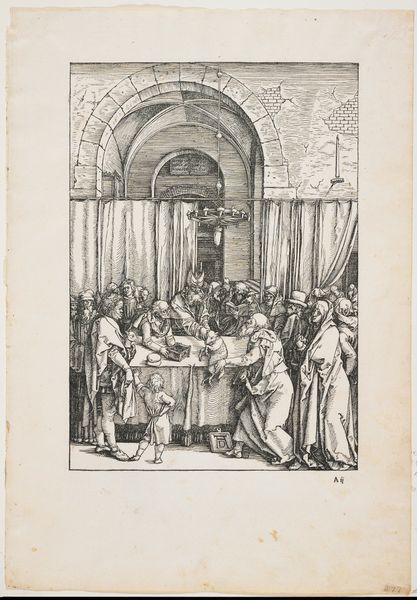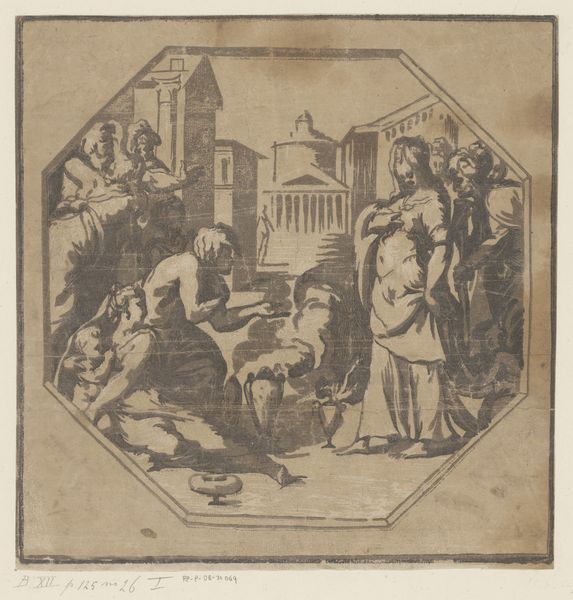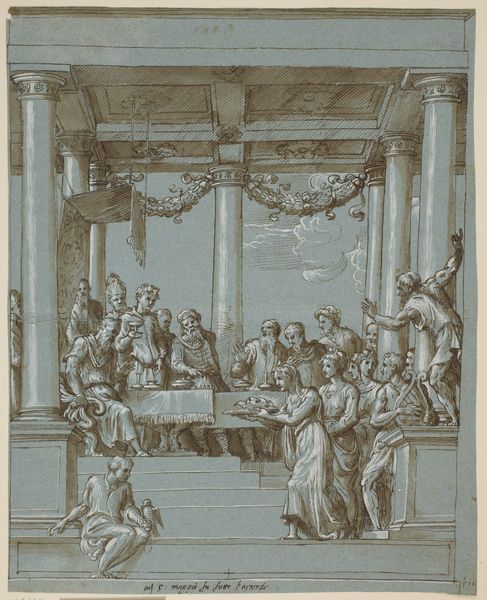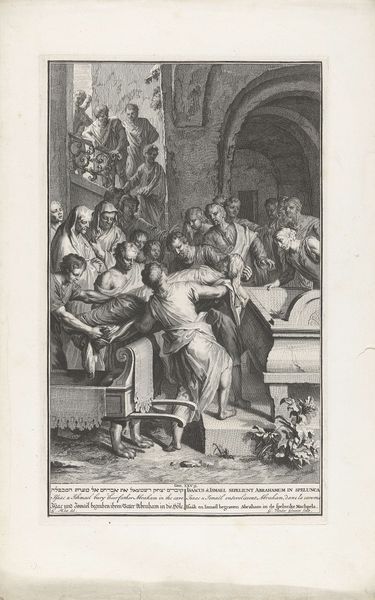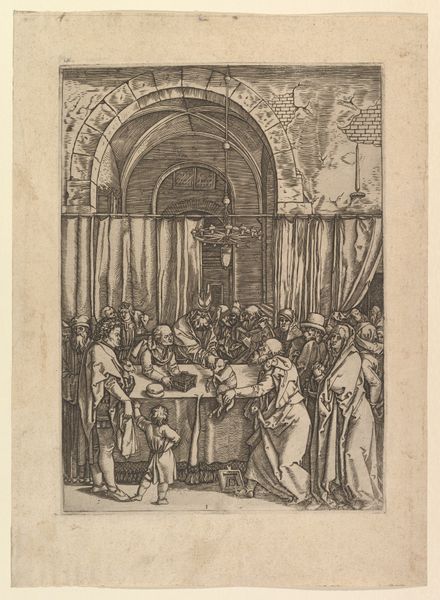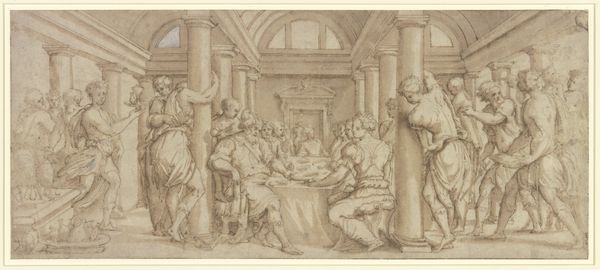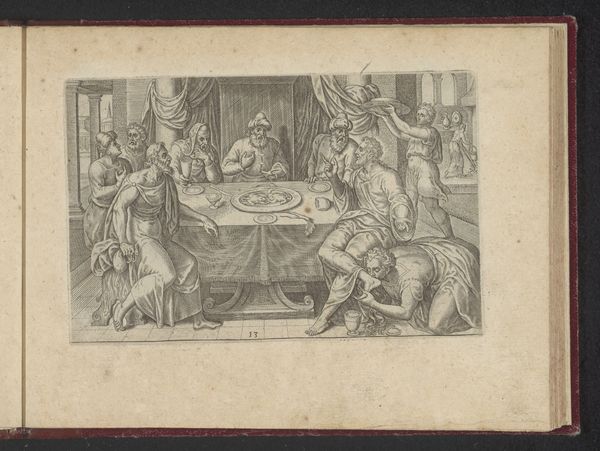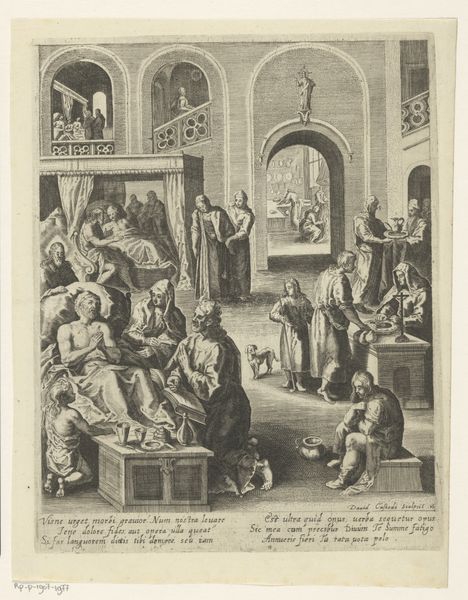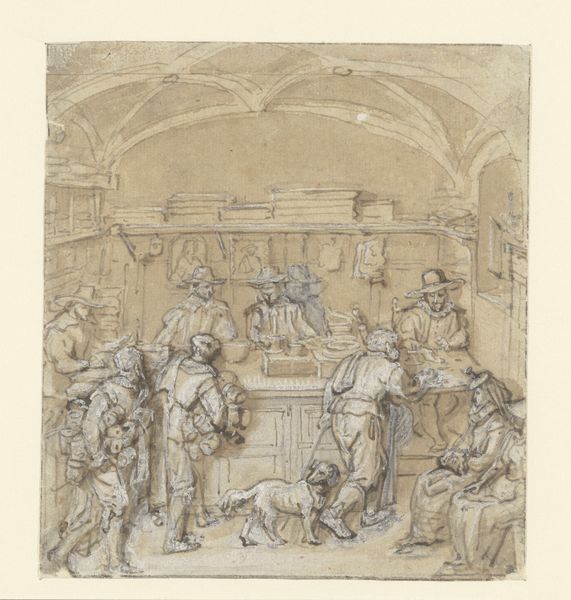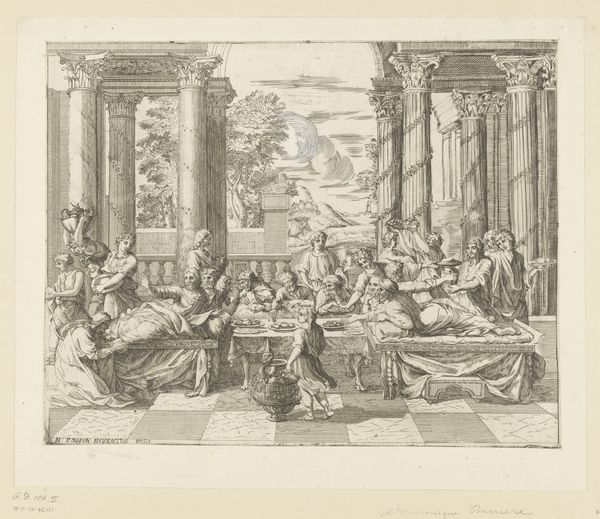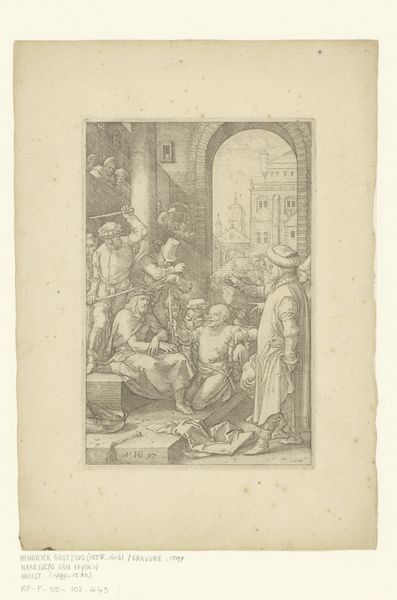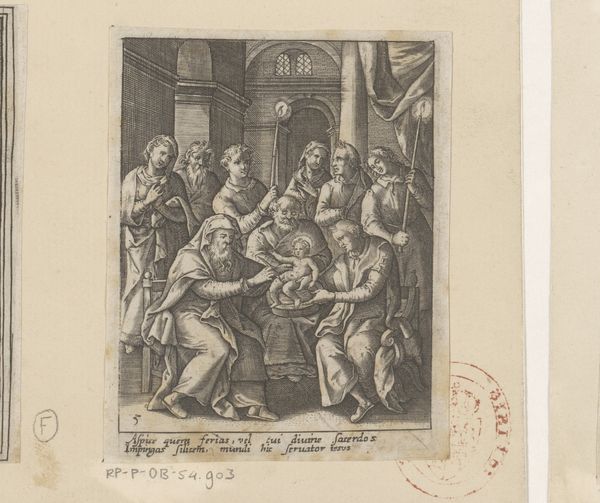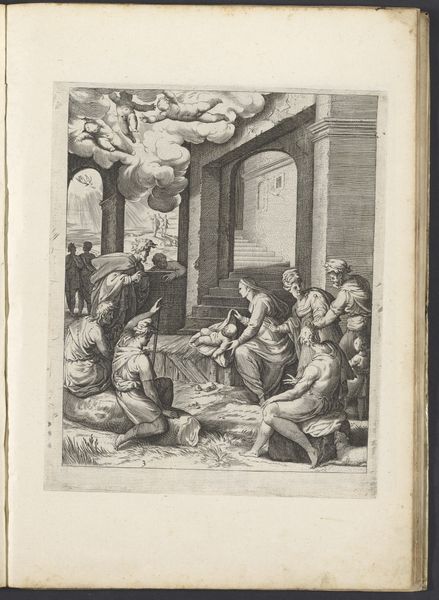
drawing, paper, ink, chalk
#
drawing
#
baroque
#
figuration
#
paper
#
ink
#
coloured pencil
#
chalk
#
history-painting
Copyright: Public Domain
Curator: Look at the rendering of this baroque drawing. It's a depiction of "The Presentation of Christ in the Temple." by Giacinto Gimignani, currently held in the Städel Museum. Editor: Immediately, the tonal range jumps out. The artist used ink, chalk, and possibly coloured pencil on paper. It strikes me as quite a somber piece; there is a heaviness and quietness in the gray tones. Curator: Yes, the limitations imposed by the medium force us to focus on Gimignani’s craftsmanship and workshop practice. We get a clear view of his skills as a draughtsman as he deftly used these materials to render forms. Consider, too, the function of drawings in the seventeenth century: They were tools in the market as artists negotiated their worth for larger commissions, making visible the physical act of artistic production. Editor: Absolutely, and it’s hard to ignore the staging here. The religious significance is unmistakable. The imposing architecture almost overwhelms the human figures. It invites us to think about the Church’s self-presentation, or its symbolic presence in society. Curator: True, and yet Gimignani centers the working class figures around Christ. Editor: In that time period the Church definitely walked a very delicate line. The Baroque, though lavish, emerged partly as a response to the Reformation. Imagery served to instruct the viewer. In terms of artistry and production it seems they often aimed for balance between grand spectacle and conveying specific meanings. Curator: Perhaps we could view the work then as a social project? Gimignani skillfully demonstrates both the value of his labor and simultaneously conveys an ideological argument for his patron. Editor: Certainly the composition speaks volumes about the dynamics between artistic creation, social roles, and spiritual storytelling. Curator: Indeed. The economy of faith intertwining with that of art-making makes it much more interesting. Editor: It truly invites us to look beyond just what we see on the surface and instead examine the narratives, the artist, and society from when this piece originated.
Comments
No comments
Be the first to comment and join the conversation on the ultimate creative platform.
